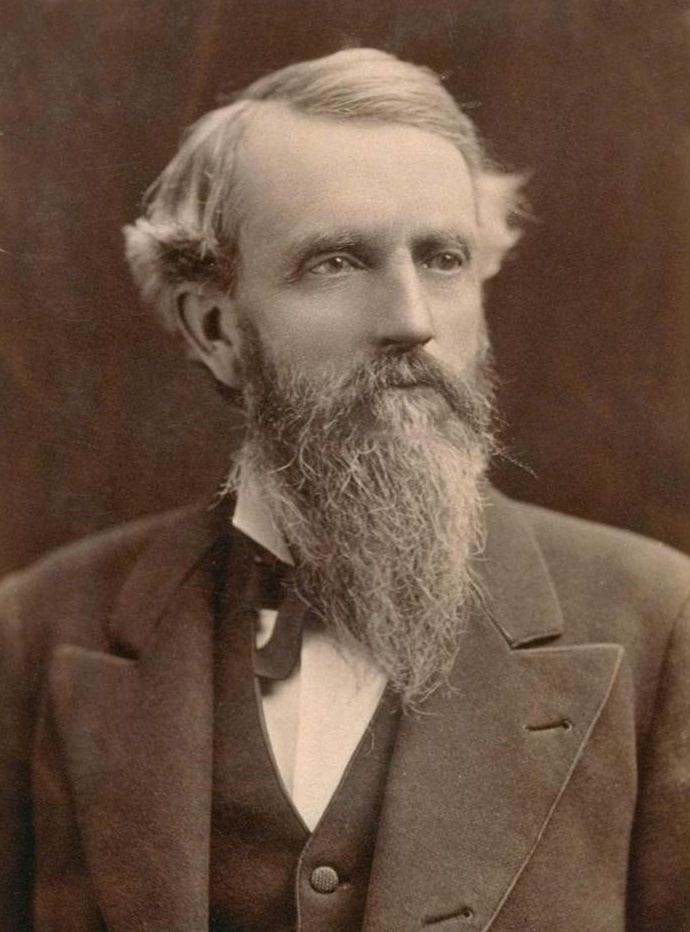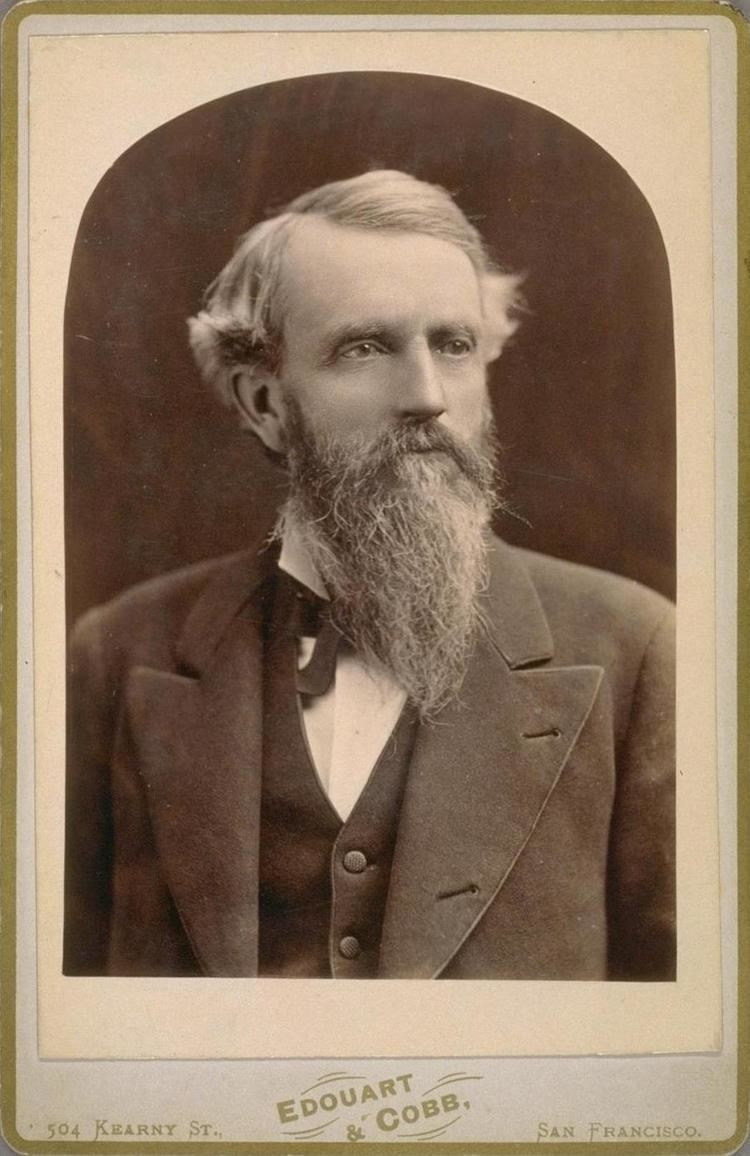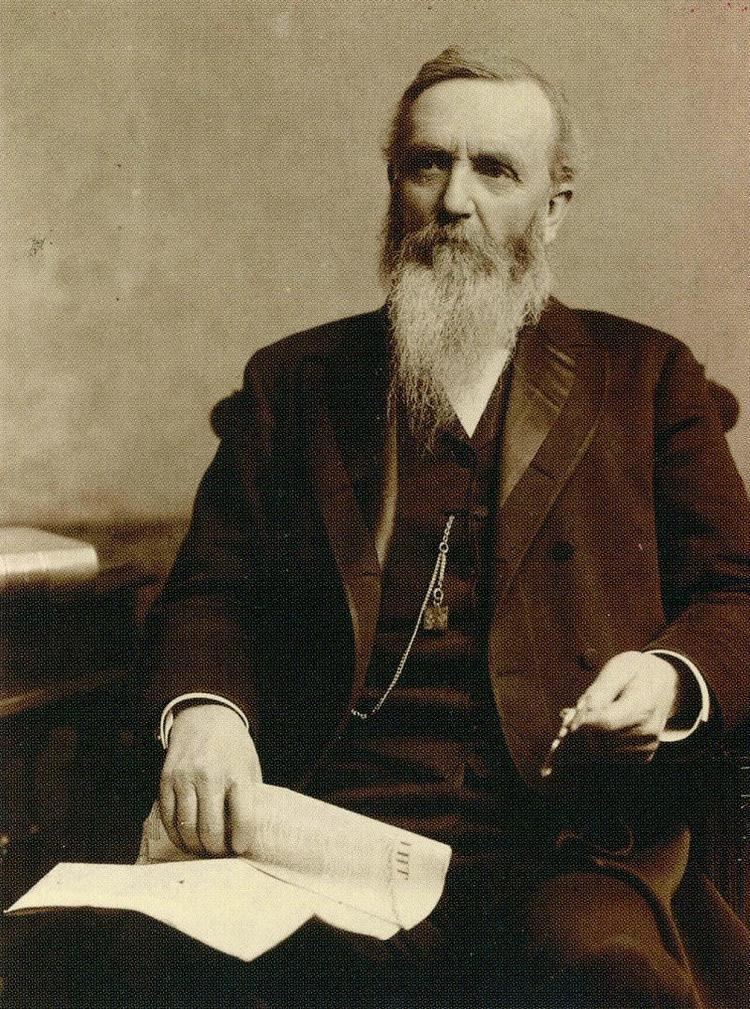Preceded by Abram P. Williams Name George Hearst | Preceded by John F. Miller Spouse Phoebe Hearst (m. 1862) Succeeded by Abram P. Williams Children William Randolph Hearst | |
 | ||
Resting place Cypress Lawn Memorial Park37°40′30″N 122°27′02.1″W / 37.67500°N 122.450583°W / 37.67500; -122.450583 (George Hearst burial site) Died February 28, 1891, Washington, D.C., United States Parents William G. Hearst, Elizabeth Collins Grandchildren Patricia Lake, Randolph Apperson Hearst Similar People William Randolph Hearst, Phoebe Hearst, Millicent Hearst, Randolph Apperson Hearst, Marion Davies | ||
George hearst
George Hearst (September 3, 1820 – February 28, 1891) was a wealthy American businessman and politician. He was a United States Senator and the father of newspaperman William Randolph Hearst.
Contents
- George hearst
- 14 george hearst
- Early life
- Mining career
- Investments
- Personal and political life
- Senatorial career
- Death
- Depictions in television and film
- References

14 george hearst
Early life

Hearst, of Scots-Irish origin, was born near present-day Sullivan, Missouri, to William G. Hearst and Elizabeth Collins. Hearst was raised in a log cabin on his family's farm in rural Franklin County. His father operated three small farms, all of which were mortgaged, with slave labor. William Hearst sold his products in his own local general store. George Hearst grew up before public education was widely accessible in Missouri, so his elementary education was inconsistent and fragmented. Hearst supplemented the gaps in his formal education by observing the local mines, and reading information about minerals and mining in his free time.
Mining career

When his father died in 1846, Hearst took over the care of his mother, brother and sister. In addition, he did some mining and ran a general store. He first heard of the discovery of gold in California in 1849. Before deciding to depart, he continued to read further news on the subject so that he could be more certain it was true. Finally, in 1850, as a member of a party of 16, he left for California. After arriving in 1850, he and his companions first tried placer mining in the vicinity of Sutter's Mill on the American River. After spending a cold winter and making meager findings, they moved to Grass Valley on the news of a new lode. Using his mining education and experience in Missouri, Hearst switched to prospecting and dealing in quartz mines. After almost ten years, Hearst was making a decent living as a prospector, and otherwise engaged in running a general store, mining, raising livestock and farming in Nevada County.
In the summer of 1859, Hearst learned of the wonderful silver assays of the "blue stuff" someone had picked up over what was to become the Comstock Lode, and sent to a Nevada County assayer. Hearst hurried over to the Washoe district of western Utah territory, where he arranged to buy a one-sixth interest in the Ophir Mine there, near present-day Virginia City. That winter, Hearst and his partners managed to mine 38 tons of high-grade silver ore, packed it across the Sierra on muleback, had it smelted in San Francisco, and made $91,000 profit (or roughly $2,513,480.45 in 2016 dollars). It was the sight of the bars of Ophir silver that started the rush to Washoe. G. Hearst knew Marcus Daly from the Comstock Lode work and in the summer of 1872 Daly suggested the possibilities of the Ontario silver mine in Park City, Utah. The Ontario carried Hearst through the Panic of 1873 and produced seventeen million dollars in ten years. Hearst later financed Marcus Daly to operate his Anaconda mine in Butte, Montana and acquired an interest in that mine as well.
Investments
As a partner of Hearst, Haggin, Tevis and Co., Hearst had interests in the Comstock Lode and the Ophir mine in Nevada, the Ontario silver mine in Utah, the Pacific mine in Pinos Altos, New Mexico, the Homestake gold mine in South Dakota (his pursuit of which is dramatized in the HBO television series Deadwood), and the Anaconda Copper Mine in Montana. (He later invested in the Cerro de Pasco Mine in Peru.) The company grew to be the largest private mining firm in the United States. Hearst acquired the reputation of being the most expert prospector and judge of mining property on the Pacific coast, and contributed to the development of the modern processes of quartz and other kinds of mining.
His son insisted on taking control of one of his father's holdings, the San Francisco Examiner, which became the foundation of the Hearst publishing empire. Hearst bought the newspaper as a sign of loyalty to his friends by accepting it as payment for a gambling debt owed to him. Hearst primarily used the Examiner to promote the interests of the Democratic Party, and to laud the party’s initiatives, especially when they were under public attack. One of his biggest investments was the Homestake Mine in South Dakota in 1877. Although the gold ore was lean, it was a massive deposit that remained as an active mine until 2002.
Personal and political life
He returned to Missouri in 1860 in order to care for his ailing mother and take care of some legal disputes. During this time, he became reacquainted with a younger neighbor, a girl of 18, whom the 40-year-old Hearst married on June 15, 1862. In 1862 Hearst and his new bride, Phoebe Apperson, moved to San Francisco. Phoebe gave birth to their only child, William Randolph Hearst, April 29, 1863. Hearst was a member of the California State Assembly from 1865 until 1866, one of 12 members representing San Francisco. Here, his knowledge of mines and the mining industry proved valuable, and he joined a special Committee on Mines and Mining Interests. During this time (1865) he acquired Rancho Piedra Blanca at San Simeon, California. He later bought parts of adjoining ranchos, and this land eventually became the site of the famed Hearst Castle. They also maintained a home in San Francisco at the corner of Chestnut and Leavenworth.
Hearst owned a thoroughbred horse racing stable. One of his better known horses was Jerome Handicap winner, Tournament. Following Hearst's death, Tournament was bought by Foxhall P. Keene when the stable was auctioned off at a dispersal sale on May 14, 1891.
He was an unsuccessful Democratic candidate for Governor of California in 1882. Until this point, Hearst had a political relationship with Central Pacific Railroad. However, when the railroad’s leadership backed the other Democratic nominee, Hearst joined Christopher Augustine Buckley and Stephen M. White in developing the Anti-Monopoly Coalition.
Senatorial career
He was appointed as a Democrat to the United States Senate to fill the vacancy caused by the death of John F. Miller, and served from March 23, 1886 to August 4, 1886, when a successor was elected. In 1887 he was elected to the Senate as a Democrat and served from March 4, 1887 until his death. As senator, Hearst focused on reducing Central Pacific’s power in American commerce.
Death
Hearst died, aged 70, in Washington, D.C. on February 28, 1891. The California Legislature and state courts adjourned, so officials could attend his funeral. When Phoebe Apperson Hearst inherited her husband’s wealth, she donated a great deal of it to help found new libraries at several universities. He is buried with his wife and son in Cypress Lawn Cemetery in Colma, California. The Hearst Memorial Mining Building on the Berkeley campus is dedicated to his memory.
Depictions in television and film
The actor Barry Kelley portrayed George Hearst in the 1964 episode "The Paper Dynasty" of the syndicated western television series Death Valley Days, hosted by Stanley Andrews. James Hampton played William Randolph Hearst and James Lanphier (1920-1969), Ambrose Bierce.
Gerald McRaney portrayed Hearst on the HBO television series Deadwood. Hearst is depicted in season 3 as a ruthless and sociopathic robber baron.
